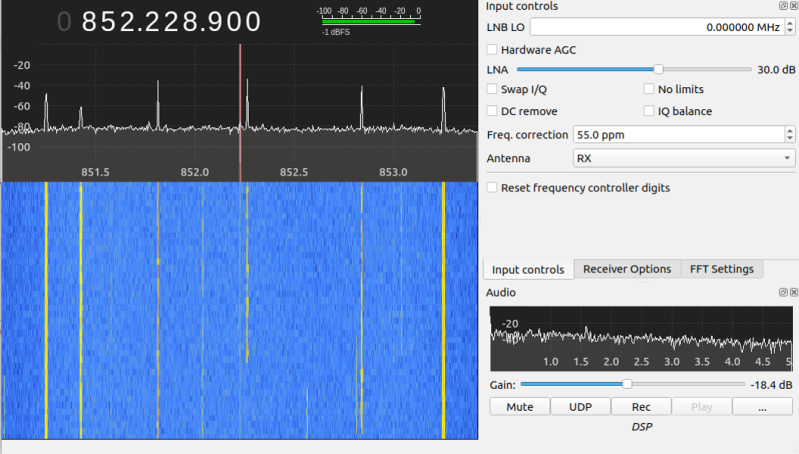For those starting to wade into radio as a hobby, one of the first real technical challenges is understanding trunked radio systems. On the surface, it seems straightforward: A control channel allows users to share a section of bandwidth rather than take up one complete channel, allowing for greater usage of the frequency range. In practice though it can be difficult to follow along, but now it’s slightly easier thanks to software defined radio.
This guide comes to us from [AndrewNohawk], who is located in San Francisco and is using his system to monitor police, fire, and EMS activity. These groups typically used trunked radio systems due to the large number of users. For listening in, nothing more than an RTL-SDR setup is needed, and the guide walks us through using this setup to find the control channels, the center frequency, and then identifying the “talk groups” for whichever organization you want to listen in on.
The guide goes into great detail, including lists of software needed to get a system like this started up, and since [AndrewNohawk] is a self-identified “radio noob” the guide is perfectly accessible to people who are new to radio and specifically new to trunked systems like these. Once you get the hang of it, it’s not too hard to scale up, either.
















The only problem is that most of it (where I live anyway) is encrypted. All the traffic of the agency ( an east-coast small-state state police entity) I used to work for is.
I’m surprised that San Francisco communications are not encrypted!
It’s probably easier for smaller depts to stay encrypted, one set of of radios managed by one team, vs large dept needing several multiple radio purchases over a few years, getting interoperability issues on different ages and manufacturers equipment.
Probably no point. I doubt a large PD could effectively manage COMSEC material across an entire department. Better to have open comms over the majority of the department and avoid the false sense of security. Keep encrypted comms for the subset that needs it.
A decade back there was some talk of an inter-agency standard, but the proposed one was leaky as hell, so maybe the whole thing got dropped.
Encrypted police radio can be bad PR
Particularly if all the media outlets use it for story leads LOL
In the case of a major emergency, like an arizona bay level event, not having encryption could actually be useful.
This is a very extensive guide, There is software called Unitrunker that, to me, was much easier to use and setup.
Same here in McAllen TX.
As a hobby in the 90’s 2000’s I used to tune in to PD communications a few years ago all communications got encrypted and the fun stopped. The tale tale of an oppressive regime.
It would be fun to develop crypto keys to decode these communications… but by suggesting this I could get into trouble so I wont encourage anyone to do it.
I would like to make more comments but I’m afraid ;( /sarcasm
I’d rather want to run an MTP1327 based trunked radio system with SDR’s than use SDR’s to listen to one.
And MPT1327 is almost the same as NMT450 or AMPS and both of those have SDR BTS implementations.
Check out sdrtrunk by DSheirer on github. It can handle multiple dongles as well as multiple types of truck systems. It can also record and cast.